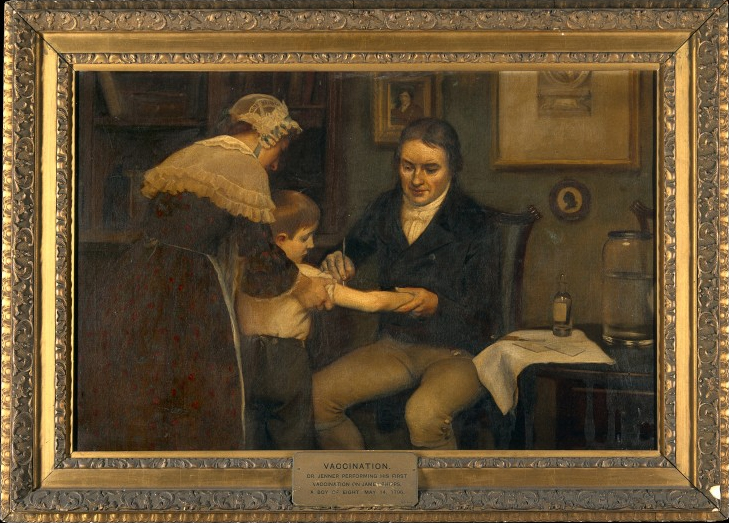An English country doctor, whose work is said to have saved more lives than that of any other human, took the first step in making his breakthrough 222 years ago today.
On May 14th, 1796, respected physician Edward Jenner scratched pus from cowpox blisters into both arms of eight-year-old James Phipps, the son of his gardener, deliberately infecting the boy with a mild dose of the disease.
 He did so in the knowledge that cowpox would not seriously hurt the boy, but also in the hope that it might render him immune to the far more serious smallpox, which could easily kill him. At that time smallpox killed thousands of people every year in England and even those who survived it were left with distinctive scarring or long-lasting effects, including blindness
He did so in the knowledge that cowpox would not seriously hurt the boy, but also in the hope that it might render him immune to the far more serious smallpox, which could easily kill him. At that time smallpox killed thousands of people every year in England and even those who survived it were left with distinctive scarring or long-lasting effects, including blindness
Outbreaks of the highly infectious smallpox caused widespread panic and often led to entire communities being deliberately isolated until it passed. Contracting the disease often spelt a death sentence.
Working as a family doctor and surgeon in his rural practice in Gloucestershire, Jenner began to notice that local milkmaids did not seem to catch smallpox, even during virulent outbreaks. The only thing that made them different was that they had invariably caught ‘cowpox’ from the udders of the cows they milked. Jenner wasn’t the first to notice this – it was already folklore that milkmaids were safe from smallpox – but he was the first to begin serious scientific investigation into why it was.
Jenner theorised that previous exposure to the relatively harmless cowpox virus in some way gave protection against the potentially deadly smallpox, which had many similar characteristics and symptoms. The only way to prove the theory was to test it, so on May 14th, 1796, he set about doing just that. He took pus from blisters on the hands of milkmaid Sarah Nelmes, who had caught cowpox from a cow named Blossom. He then scratched that pus into the arms of his test subject, eight-year-old James Phipps.
As expected, young James developed a mild fever and some uneasiness, but no full-blown infection, and he quickly recovered. The dangerous part came on July 1st, when Jenner infected the boy again, but this time with pus from a smallpox sufferer. If the disease developed, Jenner was confident he could treat the boy, but to his delight there was no disease. The test was carried out again a few days later, with the same result, convincing Jenner that young James was now immune to smallpox.
We know all these details because, as a trained scientist, Jenner kept meticulous records, which he later wrote up as an academic study. Donald Hopkins, a world expert in disease control, has written: “Jenner’s unique contribution was not that he inoculated a few persons with cowpox, but that he then proved that they were immune to smallpox. Moreover, he demonstrated that the protective cowpox pus could be effectively inoculated from person to person, not just directly from cattle.”
Jenner successfully repeated his experiments on at least 23 other people before publishing his findings, which amounted to the discovery of ‘vaccination’ – the revolutionary idea that someone could be protected from catching a disease by prior inoculation. In fact, the words ‘vaccine’ and ‘vaccination’ are derived from ‘variolae vaccinae’ – the scientific term for ‘smallpox of the cow’.
News of Jenner’s discovery soon spread around Europe, with other doctors able to replicate his ‘vaccination’ procedure with similar success. Before long, people, especially the upper classes, were clamouring to be infected with cowpox – something which would have been unthinkable a few years earlier!
Jenner continued his pioneering work in the field of vaccination, supported by grants from Parliament. It was soon discovered that his methods could be applied to other contagious diseases, with new vaccines being developed, and Jenner is now widely recognised as “the father of immunology”.
Smallpox, which once killed around half-a-million people worldwide every year, was finally certified as eradicated by the World Health Organisation in May 1980 following intensive vaccination programmes around the globe.
